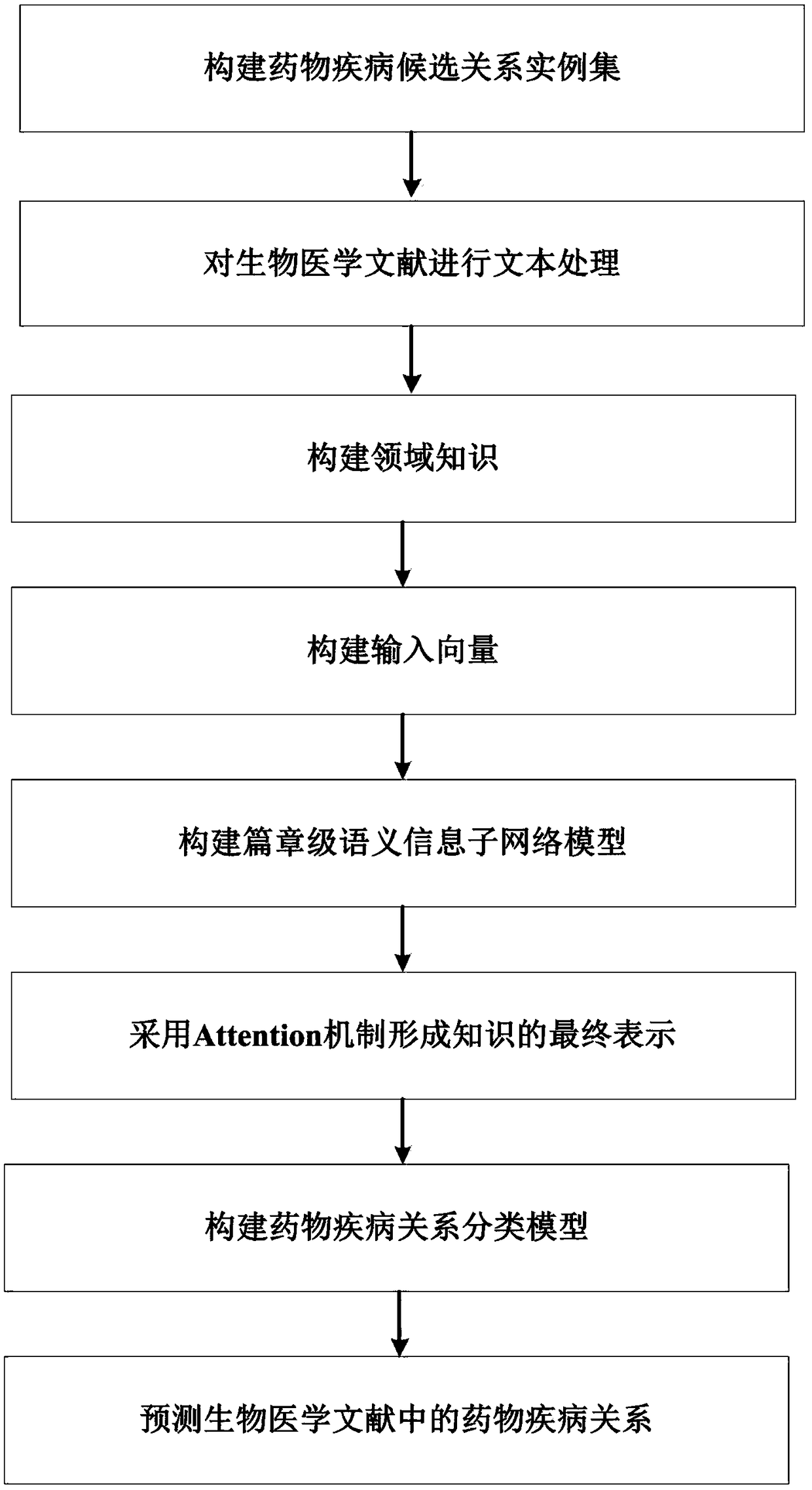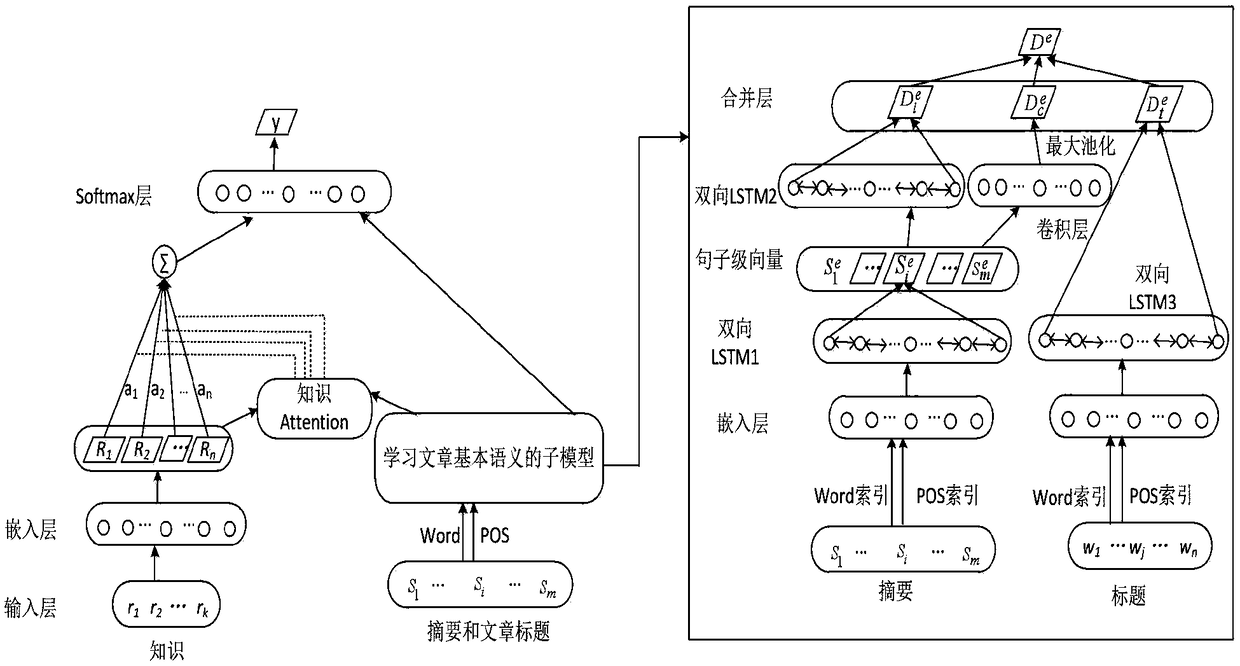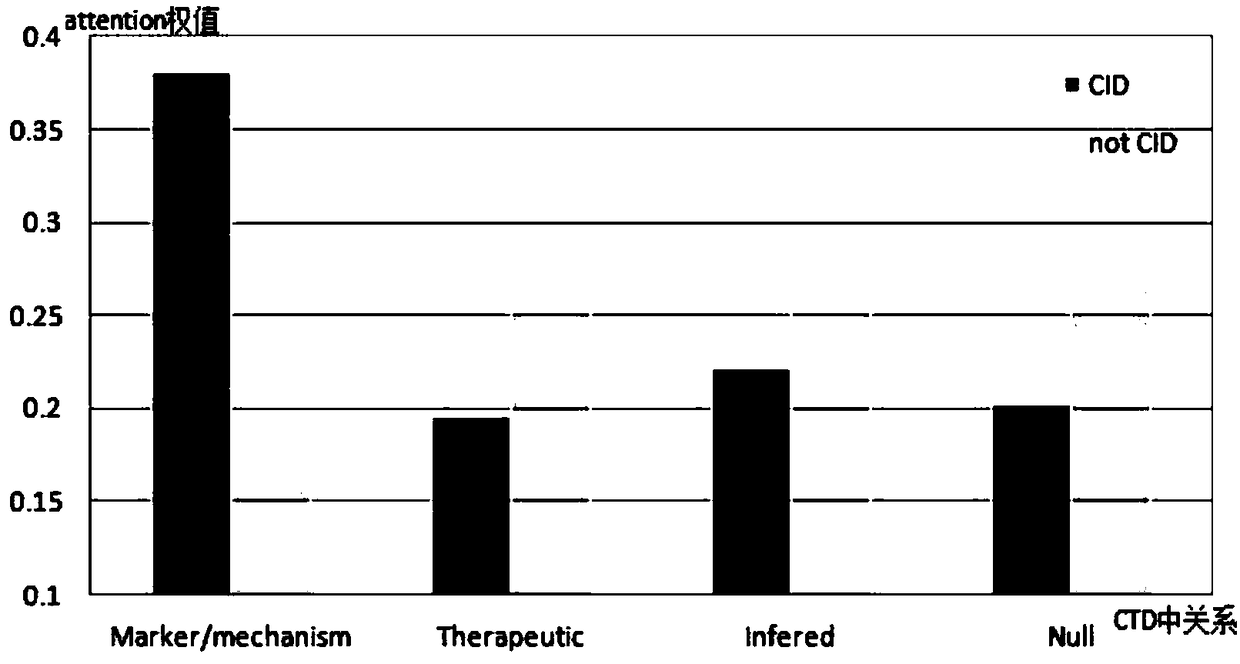A drug-disease relationship classification method based on a neural network
A neural network, relation classification technology, applied in the fields of biomedical text mining and data mining
- Summary
- Abstract
- Description
- Claims
- Application Information
AI Technical Summary
Problems solved by technology
Method used
Image
Examples
Embodiment
[0055] Based on the above description of specific implementations of the method and system involved in the present invention, description will be made in conjunction with specific embodiments.
[0056] This embodiment uses the corpus provided by task 2 to identify drug-induced disease (chemical-induced disease, CID) relationship in the CDR (drug-disease relationship) challenge proposed by BioCreative V in 2015. The CDR corpus has annotated 1,500 articles, including 4,409 drugs, 5,818 diseases, and 3,116 drug-disease relationships at the conceptual level. It is currently the largest drug-disease relationship dataset. The CDR corpus contains a total of 1500 Medline articles including abstracts and titles only, and 500 articles for each data set in the training set, development set, and test set. During the experiment, the initial training set and development set were combined to expand the training data set. The instances in the merged union are randomly divided into 10 equal s...
PUM
 Login to View More
Login to View More Abstract
Description
Claims
Application Information
 Login to View More
Login to View More - R&D Engineer
- R&D Manager
- IP Professional
- Industry Leading Data Capabilities
- Powerful AI technology
- Patent DNA Extraction
Browse by: Latest US Patents, China's latest patents, Technical Efficacy Thesaurus, Application Domain, Technology Topic, Popular Technical Reports.
© 2024 PatSnap. All rights reserved.Legal|Privacy policy|Modern Slavery Act Transparency Statement|Sitemap|About US| Contact US: help@patsnap.com










